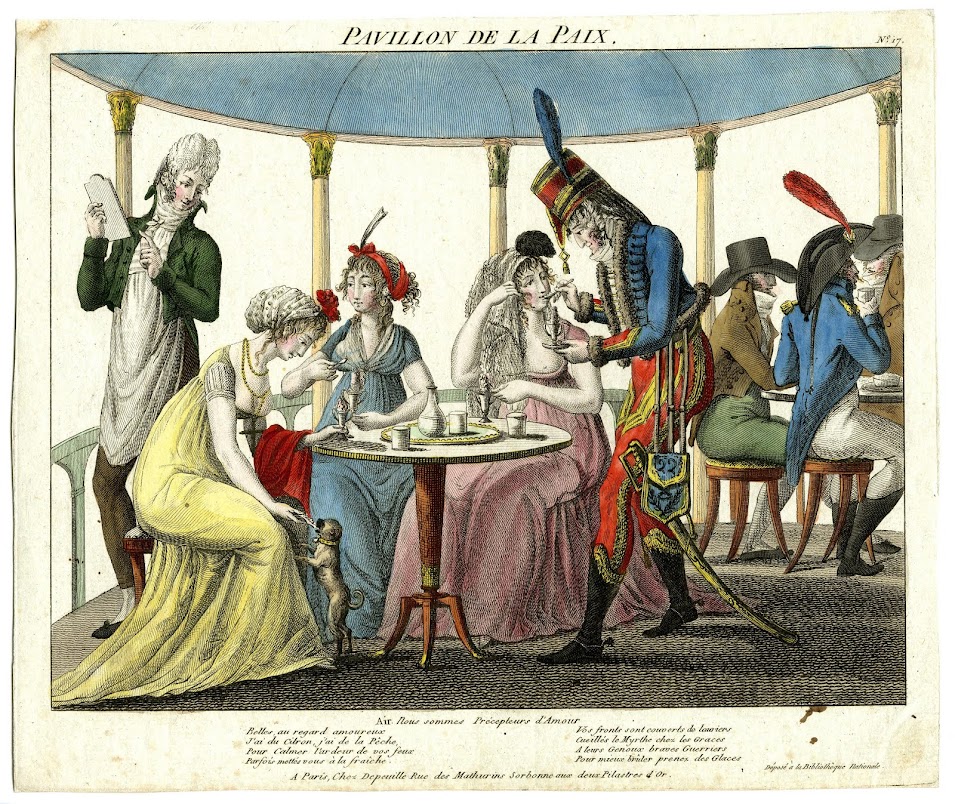There is woeful little information, though had a rather long career (especially if compared with the tragic end of young Mlle Chameroy), but maybe that is the reason why she was less celebrated later in life than Mlle Chameroy was in death?
Contemporary reviews are very favourable though, as much as the poem what opens this post is flattering, though apart from two costume sketches I couldn't find any other picture of the celebrated dancer turned actress. The poem refers of her return, apparently she was absent from the stage due to illness, and returned two years later, of a slightly fuller figure, what removed her from the dancers limelight towards acting.
Costume sketches of the ballet the Le Retour d'Ulysse, (Return of Ulysses) in 1807 (You can read a review in English here). The last figure on the first picture is Eurydée, the wet nurse of Penelope who recognises Ulysses, the role performed by Mlle Chevigny, for what she earned much praise.
 |
| On the right, Mlle Chevigny in the role of Eurydée |
 |
| Just because Berthélémy's drawings are so nice, a second one. Not picturing Mlle Chevigny |
Details & source:
Titre :
[Le retour d'Ulysse : trois pl. de costumes / par Jean-Simon Berthélémy]
Berthélémy, Jean-Simon (1743-1811). Dessinateur
1807
Bibliothèque nationale de France, département Bibliothèque-musée de l'opéra, D216-2 (4-6)
Le retour d'Ulysse : ballet héroïque en trois actes / chorégraphie et argument de Louis Milon. - Paris : Théâtre de l'Opéra-Montansier, 27-02-1807
Bibliothèque nationale de France
And of L'enfant prodigue, (the prodigal son) the second figure from the left
 |
| The second from the left, in yellow tunic |
Titre :
[L'enfant prodigue : trois pl. de costumes / par François-Guillaume Ménageot]
Auteur :
Ménageot, François-Guillaume (1744-1816). Dessinateur
Date d'édition :
1812
Identifiant :
Source :
Bibliothèque nationale de France, département Bibliothèque-musée de l'opéra, D216-3 (10-12)
Relation :
L'enfant prodigue : ballet-pantomime en trois actes / décors de Jean-Baptiste Isabey. - Paris : Théâtre de l'Opéra-Montansier, 28-04-1812
Relation :
Provenance :
Bibliothèque nationale de France








































